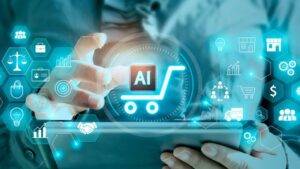AI marketing can be an invaluable asset for optimizing campaigns and increasing ROI, but to do this effectively requires taking an organized approach.
Set clear objectives, select appropriate models, and closely monitor campaigns to ensure success – this way AI will unleash its full potential and help increase marketing campaign ROI.
AI-powered tools use vast datasets to identify consumer sentiment drivers and provide insights for optimizing content and messaging to increase audience engagement and conversion rates.
1. AI Overview Optimization
AI marketing agents can increase ROI by improving audience targeting, optimizing ad spend and personalizing content – improving engagement and conversion rates while decreasing costs.
One of the most effective AI marketing tactics is optimizing for AI Overviews, or short, direct answers that appear on search engine result pages (SERPs). These results take into account location, past search behavior and other variables to deliver the answer that best matches user intent.
AI Overviews can also contain link cards to related searches for information intent and product-related searches, which is key for SEO as it can drive organic traffic directly to businesses and help establish authority and visibility.
To maximize AI Overviews, focus on creating authoritative and in-depth content that addresses users’ inquiries with precision. Utilize structured data and schema markup to help search engines better comprehend your context, while upholding high E-A-T levels. Furthermore, keep an eye out for emerging trends – AI Overviews may change over time!
2. AI-Driven Content
AI is revolutionizing content marketing by improving efficiency, personalization and scalability. However, this transformation comes with its own set of challenges; to maintain maximum ROI it is crucial that AI’s analytical prowess be balanced against human empathy and creativity in a harmonious blend.
Automation tools make time-consuming tasks such as resizing images, writing meta descriptions and tagging videos faster and more efficient, freeing up team members to focus on strategic and creative planning activities to increase content quality overall.
Discovering customer pain points and developing content to address them can help improve post-purchase experiences, retention rates and increase revenue and ROI as satisfied customers are more likely to purchase again and recommend your brand to others. AI can also analyze customer journey stages to identify opportunities for upselling or cross-selling to further increase ROI.
3. AI-Driven Ads
AI can improve ad personalization and performance, leading to higher conversion rates. Furthermore, this ensures marketing budgets are utilized more efficiently, thus optimizing ROI.
AI uses machine learning algorithms to automate ad bidding and placement, optimizing campaigns in real time based on audience demographics, behavior, and context to maximize ROI while decreasing media waste.
AI can not only analyze data, but it can also provide predictive analytics that enable marketers to anticipate future campaign results and customer demand. This can be particularly helpful in strategic planning, resource allocation and budgeting processes.
As an example, a skincare company could use AI to use AI-generated images as targeted advertisements at optimal times to drive sales and build customer loyalty. Furthermore, using this method increases engagement by providing relevant and timely content tailored to customer needs and expectations – something traditional ads alone don’t do well at doing.
4. AI-Driven Analytics
AI can assist marketers in quickly and accurately analyzing massive volumes of marketing data to make informed decisions at scale. This allows for faster analysis and more accurate predictions – ultimately leading to improved campaign management and ROI.
AI tools can assist marketers by enabling them to identify high-converting customer segments, enabling them to direct their advertising efforts towards these groups and reduce wasteful spend and increase ROI.
AI can also continuously monitor ad campaigns and make real-time adjustments to improve their performance, leading to higher CTR and conversion rates.
AI can also help businesses anticipate market trends and plan future marketing strategies – helping them remain relevant with customers and avoid falling behind competitors.
As marketers integrate AI into their operations, it’s critical that they set clear and measurable objectives in order to select AI tools that align with overall business goals. Marketers should start by prioritizing areas where AI could have the greatest impact, such as hyper-personalization, automating workflows or providing predictive analytics. With clear goals in place, marketers can select AI-powered tools that best meet their needs while seamlessly integrating into existing technology solutions.
5. AI-Driven Automation
AI can assist marketers by automating and streamlining marketing tasks and processes, freeing them up to focus on more strategic projects or goals while increasing ROI.
AI-powered automations that can handle data analysis, customer segmentation, email sorting and basic reporting can also help create personalized content and respond to customer queries more efficiently.
Chase bank used Persado’s generative AI to rewrite their advertisements, leading to an impressive 450% increase in clicks. They did this because the AI generated copy and headlines far more engaging than what an experienced marketer could come up with on their own based solely on subjective judgment and experience.
Companies using AI for marketing must make sure to choose a partner who can secure proprietary information to avoid data leakage and protect customers’ privacy. AI platforms should only access data related to their business and industry trends so as to maximize return on investment from marketing strategies.




